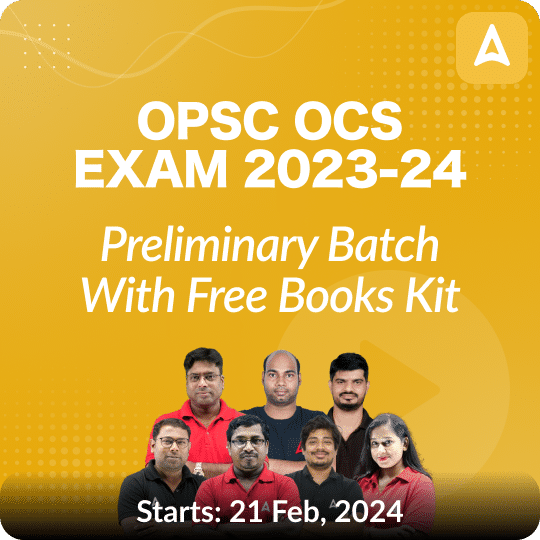As you are aware, in all competitive exams, the “Daily Current Affairs Section” holds significant importance in determining the cutoff scores. Therefore, if you excel in this section, you will have a better chance of achieving higher marks in these exams and securing a spot on the merit list.
Addapedia Odisha – Daily Current Affairs – 09 April 2024
| National and International News |
| Gravity hole’ in the Indian Ocean |
Context:
In the Indian Ocean, there exists a peculiar phenomenon known as a ‘gravity hole,’ where the Earth’s gravitational pull is weaker, resulting in a depression in the sea level by over 328 feet.
Reason behind formation:
- This anomaly has long puzzled geologists, but recent research claims to have uncovered its origins: plumes of magma from deep within the Earth, akin to those forming volcanoes.
- A recent study in Geophysical Research Letters has outlined these findings.
Influence of Earth’s Shape and Density:
- The Earth’s irregular shape and density variations play a significant role in shaping surface features and gravitational pull. Density variations help determine the hypothetical water level equilibrium on the surface under the influence of gravity.
Characteristics of the Gravity Hole
- Known officially as the Indian Ocean geoid low, this circular depression covers approximately 1.2 million square miles, originating from the southern tip of India.
- First observed in 1948 by Dutch geophysicist Felix Andries Vening Meinesz during a gravity survey, it has remained a mystery despite ongoing research efforts.
Future Implications:
- The future of the Indian Ocean geoid low remains uncertain, dependent on shifts in Earth’s mass anomalies.
- While Cardiff University professor Huw Davies finds the research intriguing and anticipates further investigation, University of Florida geology professor Dr. Alessandro Forte expresses concerns about the study’s modeling approach and discrepancies between projected and actual geoids.
|
| Nimmu-Padam-Darcha Road |
Context:
- The Border Roads Organisation (BRO) has achieved a significant milestone by establishing connectivity on the 298-km Nimmu-Padam-Darcha road in Ladakh.
- This road, in addition to the existing Manali-Leh and Srinagar-Leh routes, will serve as the third axis through the strategically important area, reducing dependence on airways during colder months and facilitating the movement of Army personnel.
Key points:
- The Nimmu-Padam-Darcha road is now the third axis connecting Ladakh to the hinterland, apart from the Manali-Leh and Srinagar-Leh routes.
- It is the shortest route and passes through only one high pass, Shinkun La, which is 16,558 feet high, making it quicker and more effective.
- Part of the Kargil-Leh highway, the road will pass through Darcha and Nimmu, providing all-weather access to Leh. It starts 35 kilometers before Leh, at Nimo on the Leh-Srinagar highway, and connects Manali to Leh via Darcha and Nimmu on the Kargil-Leh highway.
|
| INS SHARDA |
Context:
- Admiral R Hari Kumar, Chief of the Naval Staff, awarded INS Sharda an ‘On the Spot Unit Citation’ for its successful anti-piracy operations.
- The ship was involved in the safe release of all 19 crew members (11 Iranian & 08 Pakistani) of Iranian fishing vessel Omari which was held hostage by pirates off East coast of Somalia.
About:
- INS Sharda (P55) is a Sukanya class patrol vessel of the Indian Navy.
- The Sukanya-class patrol vessels are large, offshore patrol craft in active service with the Indian Navy.
- Vessels of the Sukanya class are named after notable women from Indian epics.
- It was commissioned on 27 October 1991.
- Homeport – Kochi.
|
| Changpa Tribe |
Context:
- Climate activist Sonam Wangchuk and Leh Apex Body (LAB) decided to cancel the Pashmina border march, which aimed to raise awareness about the challenges faced by the Changpa nomadic tribes.
About:
- The Changpa, also known as Champa, are a semi-nomadic group primarily located in the Changtang plateau of southeastern Ladakh.
- They share linguistic and cultural similarities with Tibetans and follow Tibetan Buddhism.
- Their traditional lifestyle revolves around high-altitude pastoralism, with yak and goat herding being their primary occupations.
- Identification: Changpa families live in conical yak-skin tents called reboo. These tents typically house the family deity and a picture of their spiritual leader, often the Dalai Lama.
- Nomadic vs. Settled: Nomadic Changpa are known as Phalpa, while those who have settled in fixed locations are called Fangpa.
- Livelihood: Rearing animals and selling their produce, such as milk, hair, and meat, is the primary source of income for many Changpas.
- Changra Goats: Changpa rear Changra goats, which produce the highly valued Pashmina (Cashmere) fiber, known for its softness and warmth.
- Buddhist Beliefs: Despite their reliance on animal husbandry, Changpa’s Buddhist beliefs prohibit them from killing animals for meat. They only use animals that have died naturally for meat and hides.
- Official Status: In 1989, the Indian government granted the Changpa official recognition as a scheduled tribe.
|
| Clean Energy Transitions Programme 2023
|
Context:
- In the latest release, the 2023 report of the Clean Energy Transitions Programme (CETP) highlights significant strides in advancing global efforts towards achieving a net-zero energy system.
- Established in 2017 under the auspices of the International Energy Agency (IEA), CETP leverages the expertise and influence of the IEA to facilitate the transition to clean energy.
Key points:
- CETP operates through a structured approach encompassing three main pillars.
- Firstly, it provides technical assistance and capacity building to countries in setting clean energy goals.
- Secondly, it fosters coordination among various multilateral organizations involved in clean energy initiatives.
- Lastly, CETP showcases global-level efforts and achievements in clean energy transition.
Achievements:
- Noteworthy accomplishments in 2023 include the implementation of new fuel standards in Indonesia, the formulation of an energy transition plan in Uganda, and the establishment of regulations governing China’s electricity market.
- These initiatives, in line with IEA recommendations, underscore CETP’s role as a trusted advisor in advancing clean energy policies worldwide
|














